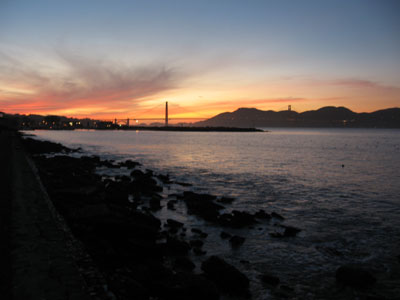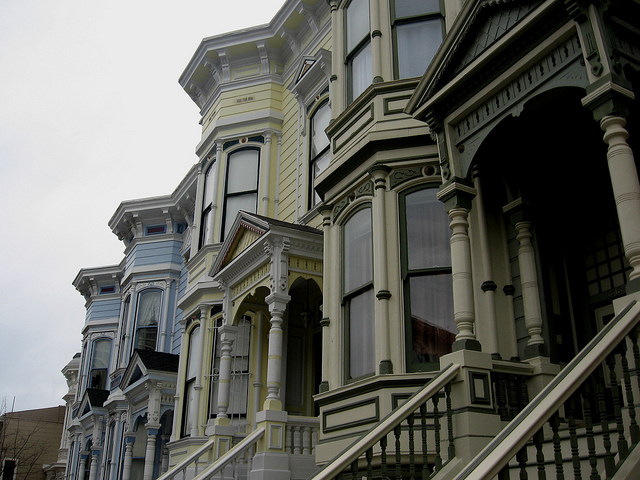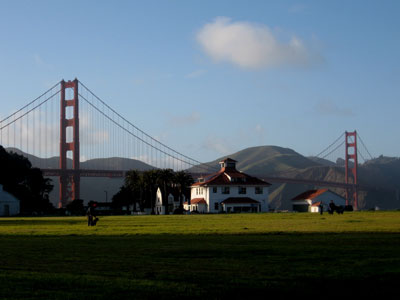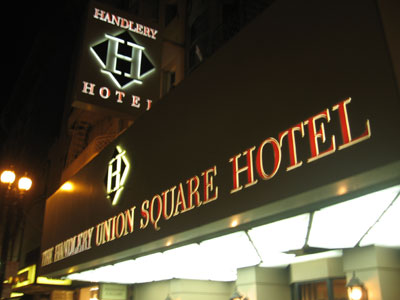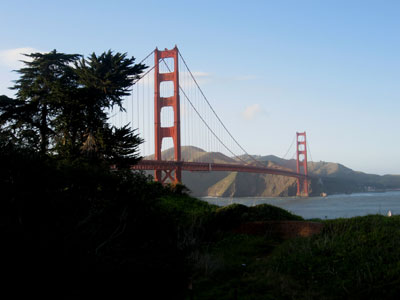There are currently 40 cars in service: 28 “single-enders” serve the Powell Street routes and 12 “double-enders” serve the California Street route. The cables pull up to 26 cars at a time on weekdays. The cars have a capacity of carrying more than 60 people, and an astounding 7.5 million passengers ride these cars each year.
The Cable Car Barn, Powerhouse and Museum, is known as “Home Base” to the cable cars. The Museum houses one of the very first cable cars (1873), a Sutter St. grip car and trailer, as well as scale models of some of the 57 different types of cable cars, which were once operated in the city. From the gallery, visitors can look down onto pulleys, which thread the cable through big figure eight’s and back into the system via slack-absorbing tension racks. Daily visiting hours are from 10 a.m. to 5 p.m. (Oct. – Mar.) and 10 a.m. to 6 p.m. (Apr. – Sept.).

The historic carousel at Pier 39
7. San Francisco’s Waterfront is a popular tourist destination. Please tell us about Fisherman’s Wharf, Pier 39 and other places to experience the waterfront in San Francisco.
Fisherman’s Wharf is a mile in length, starting at Aquatic Park and ending at Pier 39. Along with its variety of restaurants, the central part appeals to families because of its Wax Museum, Guinness Museum of World Records, and Ripley’s Believe It or Not Museum. Hornblower runs tour boats around Alcatraz from Pier 33, while Red and White runs tours to the Golden Gate Bridge, both popular family tours.

Celebrating the Crab Festival at Pier 39
Two shopping areas, The Anchorage and The Cannery, are located in the central area. Each is filled with unique stores, selling boutique items not available elsewhere.
Few visitors realize that the area known as Fisherman’s Wharf extends to Aquatic Park, a popular place where residents have always loved to picnic, promenade, or play bocce ball. The Maritime Museum, once the park’s palatial bathhouse, exhibits memorabilia from the West Coast’s seafaring days and includes giant masts, painted figureheads, and detailed ship models. The building itself resembles a cruise ship, and you might take a break from your explorations by sitting on the outside deck, listening to the waves break on shore.

A seagull ponders life at the Aquatic Park
At Fisherman’s Wharf the crab pots are out in force most times of year, but especially during Dungeness crab season (mid November through mid-June), when tasty, fresh crab are available in abundance.
8. Please tell us about San Francisco’s unique neighborhoods, places such as Chinatown, North Beach, Haight-Ashbury, the Castro and many others.
The entrance to Chinatown at Grant Avenue and Bush Street is called the “Dragon’s Gate”. Inside you will find 24 blocks of hustle and bustle, most of it taking place along Grant Avenue, the oldest street in San Francisco. This city within a city with its exotic shops, renowned restaurants, food markets, temples and small museums is best explored on foot. Visitors can buy ancient potions from herb shops, relax and enjoy a “dim sum” lunch or witness the making of fortune cookies.

Views of North Beach
North Beach, rich in Italian heritage features a variety of cabarets, jazz clubs, galleries, inns, family style restaurants and gelato parlors. Bakeries and delicatessens serve up such traditional Italian delicacies as prosciutto, provolone, mozzarella, St. Honore cake and sacripantina. A perfect spot for cappuccino and espresso, North Beach is transformed into one of San Francisco’s most electric playgrounds by night; live music and dancing keep the streets swinging.
The “Summer of Love” lives on mainly in stores throughout the charming Victorian Haight-Ashbury; find vintage clothing, books and records along Haight Street, the neighborhood’s busiest stretch. Places of interest include 710 Ashbury Street, once home to the legendary musical group, the Grateful Dead; 112 Lyon Street, where famous singer Janis Joplin lived; Buena Vista Park, with its delightful views of the City; and, for architectural highlights, Masonic, Piedmont and Delmar Streets.

Stunning Victorian architecture in Pacific Heights
The Castro is a series of imaginative boutiques, bookstores and bars. Novelty items abound in shops at the end of Market Street between 16th and 17th Streets. The heart of the area is 18th and Castro Streets. Built in 1922 the Castro Theater, 429 Castro Street, is one of the last grand movie palaces, featuring revivals and pre-film concerts on the mighty Wurlitzer. Also of note are Harvey Milk Plaza, dedicated to one of the first openly gay elected officials in the U.S., and Pink Triangle Park, a memorial to 15,000 lesbian, bisexual, gay and transgender Holocaust victims. Each June, the Lesbian, Gay, Bisexual, Transgender Pride Celebration Parade draws nearly 500,000 participants and spectators. The Castro Street Fair unfolds each October.
More exciting places to explore include the Embarcadero, North Beach and Little Italy, Japantown, SoMa, and many more.

Sea lion sculpture at Pier 39
Thank you for your great information, Tanya, and we’ll talk about Golden Gate Park, and the city’s many offerings in terms of architecture, culture, nightlife, shopping and many other topics in Part 2 of this interview.
